Service Alert
July 1 - Canada Day
CELA will be closed on Tuesday, July 1st for Canada Day. Our office will reopen and our Contact Centre services will resume on Wednesday, July 2nd. Enjoy your holiday!
CELA will be closed on Tuesday, July 1st for Canada Day. Our office will reopen and our Contact Centre services will resume on Wednesday, July 2nd. Enjoy your holiday!
Showing 1 - 20 of 2149 items
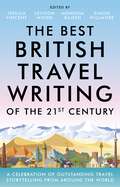
Travel writing mattersExplore the world through this beautiful collection of the finest travel writing published in British media in the…
21st century - as judged by some of the most respected travel writers in the world: Levison Wood, Monisha Rajesh, Jessica Vincent and Simon WillmoreThe world has changed, but our desire to explore new places remains as strong as ever. The Best British Travel Writing of the 21st Century includes 30 outstanding travel stories published in British media over the last two decades, as chosen by some of the top names in travel writing today. Through travel's most talented storytellers, you'll face adversity along the Congo's raging River Lulua, make new friends aboard Iraq's night train, and embark on life-changing pilgrimages from India to Saudi Arabia.This book is an ode to travel and all that it offers, but it's also a celebration of a genre that brings the world closer to us. At its best, travel writing encourages empathy and inspires change. Join our award-winning writers in marvelling at the power and beauty of travel, and let them inspire you to fall in love with the world all over again.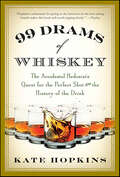
Kate Hopkins knew there had to be more to whiskey than using it as a mixer. She had an unquenchable…
thirst to learn more about "the drink" and set out on an ambitious itinerary researching its history. Combining comprehensive research with informal narrative, Hopkins entertains and educates the readers on whiskey's place in the history of the world. She visited historians and pub owners, went to distilleries owned by corporations who sell thousands of gallons per day, and artisans who sell thousands of gallons per year, and interviewed the aficionados and the common drinkers, because one of the best aspects of whiskey is not just its taste, but the stories about the drink that are told around the bar. As an added bonus, she discusses the fine art of distilling, the proper ways to drink whiskey, and provides tasting notes on different brands, all in the hope of discovering the best shot of the liquor.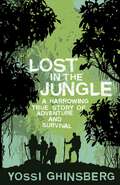
By Yossi Ghinsberg. 2006
Four travellers set off into the Amazon rainforest on an expedition to find a hidden tribe. But what begins as…
the adventure of a lifetime quickly becomes a struggle for survival when they get lost in the jungle. It’s a story of friendship and a terrifying true account that you won’t be able to put down.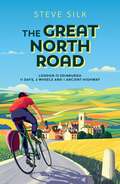
Travelling by bike at a stately 14 mph, Steve Silk heads north, searching out milestones and memories, coaching inns and…
coffee shops. The Great North Road is a journey as satisfying for the armchair traveller as the long-distance cyclist. Enriched with history, humour and insight, it’s a tribute to Britain and the endless appeal of the open road.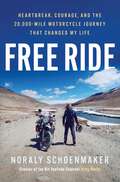
By Noraly Schoenmaker. 2024
By the YouTube sensation with nearly three million followers, the inspiring account of a young woman who, in a moment…
of personal crisis, embarked on an epic, transcontinental motorcycle ride—and along the way found a new sense of purpose. Noraly Schoenmaker was a thirtysomething geologist living in the Netherlands when she learned that her live-in partner had been having a long-term affair. In desperate need of a new beginning, she decided to quit her job and jet off to India. But her plans were dashed when she fell quickly and helplessly in love: with a motorcycle. Behind the handlebars, she felt alive and free—nimble enough to trace the narrowest paths, powerful enough to travel the longest of roads. First, she set off toward the Pacific, through the jungles of Myanmar and Thailand, then into Malaysia. Rather than satisfy her appetite for the open road, this ride only piqued it. She shipped her bike to Oman, at the base of the Arabian Peninsula, and embarked on a journey through Iran, across Tajikistan along its border with Afghanistan, over the snowy peaks of Central Asia, and into Europe, all the way back home to the Netherlands. She covered remote and utterly unfamiliar territory, broke down on impossibly steep mountains, and pushed too many miles along empty roads, farther and farther from civilization. But through her travels, she discovered the true beauty of the world, the kindness of its people, the simplicity of its open spaces, and a new and unshakable belief in her capabilities. Free Ride is an inspiring story of self-discovery and renewal. Filled with unforgettable figures, hilarious disasters, and powerful human connections, it shows you what happens when you open your heart and let the world in. New York Times Bestseller
By Andrew Zimmern. 2009
Andrew Zimmern has a well-earned reputation for traveling far and wide to seek out and sample anything and everything that"s…
consumed as food globally. He celebrates the undiscovered destinations and weird wonders in our increasingly globalized world. Adult. Some strong language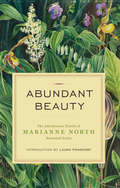
By Marianne North. 2010
"In 1871, Marianne North, a brilliant artist with a keen interest in botany, set-forth to travel the world on a…
quest to paint indigenous plants in their natural habitat. Encouraged by her friend Charles Darwin, North travelled by boat, train, mule, foot and palanquin to every continent except Antarctica. She circled the globe twice over fifteen years and accumulated an extensive and valuable collection of more than eight hundred paintings, which today comprise the esteemed Marianne North Gallery at the Royal Botanical Gardens at Kew, London. North high-spirited, indefatigable, and brave also kept detailed journals, which were posthumously published in three volumes in the late 1800s. Abundant Beauty collects the most engaging writings from those journals in one edition, including rich descriptions of botanica and delightful accounts of local people and customs from her sometimes dangerous travels. Abundant Beauty is a fascinating and informative read for botanists, gardeners, historians, and armchair travellers." -- WorldCat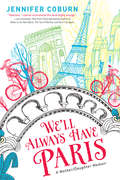
By Jennifer Coburn. 2014
How her daughter and her passport taught Jennifer to live like there's no tomorrowJennifer Coburn has always been terrified of…
dying young. So she decides to save up and drop everything to travel with her daughter, Katie, on a whirlwind European adventure before it's too late. Even though her husband can't join them, even though she's nervous about the journey, and even though she's perfectly healthy, Jennifer is determined to jam her daughter's mental photo album with memories—just in case.From the cafés of Paris to the top of the Leaning Tower of Pisa, Jennifer and Katie take on Europe one city at a time, united by their desire to see the world and spend precious time together. In this heartwarming generational love story, Jennifer reveals how their adventures helped vanquish her fear of dying...for the sake of living.We'll Always Have Paris is a tale of laughter, tears, and the joys of self-discovery. Jennifer's raw and honest reflections will resonate with readers of all backgrounds, as she delves into the complexities of motherhood, the pursuit of dreams, and the art of letting go. Packed with emotion, wit, and unforgettable moments, this memoir is a celebration of life's imperfections and the enduring strength of family bonds."Brimming with joie de vivre!"—Jamie Cat Callan, author of Ooh La La! French Women's Secrets to Feeling Beautiful Every Day"Coburn proves as adept at describing the terrain of the human heart as she is the gardens of Alcázar or the streets of Paris."—Claire and Mia Fontaine, authors of the bestselling Come Back and Have Mother, Will Travel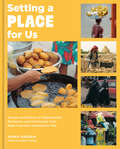
An enthralling, intimate collection of essays and over 75 recipes exploring the history of eight countries to understand the impact…
of geopolitical conflict and its outcomes on cuisine and food system, from Somali refugee and James Beard Award-winning author of In Bibi's Kitchen.Countries dealing with major conflict are rarely portrayed in a well-rounded light by the media. Images of disarray and decline saturate their narratives, ignoring the strength, resourcefulness, and ingenuity that arise from having to navigate conflict. With empathy, curiosity, and an insistence on sharing different aspects of human survival, Hawa Hassan gathers singular, multifaceted narratives for eight countries from around the world.Each chapter is devoted to a different country and opens with an informative essay on the culture and its history. Recipes follow highlighting indigenous ingredients and share intimate portraits of the people preserving food culture, including food from:• Afghanistan, such as Bolani (Stuffed Flatbread) and Borani Banjan (Stewed Eggplant with Garlic Yogurt)• Democratic Republic of Congo, such as Chikwanga (Cassava Flour Cake) and Pondu (Cassava Leaf Stew)• Egypt, such as Ta'ameya (Fava Bean Fritters) and Ghorayeba (Shortbread Cookies)• El Salvador, such as Sopa de Res (Beef Shank Soup) and Pupusas con Curtido (Filled Masa Flatbreads with Cabbage Slaw)• Iraq, such as Shorbat Adas (Lentil Soup) and Bamia (Lamb and Okra Stew)• Lebanon, such as Malfouf (Stuffed Cabbage Rolls) and Mouhamara (Spicy Walnut and Red Pepper dip)• Liberia, such as Ground Peanut Soup and Kala (Sweet Fried Dough)• Yemen, such as Saltah (Lamb Stew with Fenugreek Fruth) and SahawiqAn original and groundbreaking work, Setting a Place for Us returns agency to the people whose stories, up until now, have been ignored in the media. It sheds light on the important work of preserving recipes and food traditions in places of conflict and migration.
By Aimée Lévesque. 2024
Parmi les femmes se présente comme un livre-mausolée en hommage à vingt-huit femmes négligées par l'Histoire : femmes de, muses…
de, filles de, artistes, œuvres d'elles-mêmes, résistantes, citoyennes engagées dont les destins ont sillonné les routes de l'ancien Empire austro-hongrois sur lesquelles Aimée Lévesque a vagabondé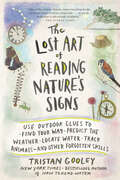
Turn every walk into a game of detection—from master outdoorsman Tristan Gooley, New York Times-bestselling author of How to Read…
a Tree and The Natural Navigator When writer and navigator Tristan Gooley journeys outside, he sees a natural world filled with clues. The roots of a tree indicate the sun’s direction; the Big Dipper tells the time; a passing butterfly hints at the weather; a sand dune reveals prevailing wind; the scent of cinnamon suggests altitude; a budding flower points south. To help you understand nature as he does, Gooley shares more than 850 tips for forecasting, tracking, and more, gathered from decades spent walking the landscape around his home and around the world. Whether you’re walking in the country or city, along a coastline, or by night, this is the ultimate resource on what the land, sun, moon, stars, plants, animals, and clouds can reveal—if you only know how to look! #1 Bestseller in Star Gazing Publisher’s Note: The Lost Art of Reading Nature’s Signs was previously published in the UK under the title The Walker’s Guide to Outdoor Clues and Signs.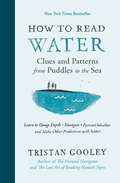
By Tristan Gooley. 2016
Hone your senses and learn to read the hidden signs of nature—from master outdoorsman Tristan Gooley, New York Times-bestselling author…
of How to Read a Tree and The Lost Art of Reading Nature’s Signs “Equal parts alfresco inspiration, interesting factoids, how-to instructions and self-help advice.”—The Wall Street Journal When most of us go for a walk, a single sense—sight—tends to dominate our experience. But when New York Times–bestselling author and expert navigator Tristan Gooley goes for a walk, he uses all five senses to “read” everything nature has to offer. A single lowly weed can serve as his compass, calendar, clock, and even pharmacist. In How to Read Nature, Gooley introduces readers to his world—where the sky, sea, and land teem with marvels. Plus, he shares 15 exercises to sharpen all of your senses. Soon you’ll be making your own discoveries, every time you step outside!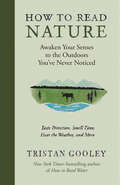
Hone your senses and learn to read the hidden signs of nature—from master outdoorsman Tristan Gooley, New York Times–bestselling author…
of How to Read a Tree and The Lost Art of Reading Nature’s Signs “Equal parts alfresco inspiration, interesting factoids, how-to instructions and self-help advice.”—The Wall Street Journal When most of us go for a walk, a single sense—sight—tends to dominate our experience. But when New York Times–bestselling author and expert navigator Tristan Gooley goes for a walk, he uses all five senses to “read” everything nature has to offer. A single lowly weed can serve as his compass, calendar, clock, and even pharmacist. In How to Read Nature, Gooley introduces readers to his world—where the sky, sea, and land teem with marvels. Plus, he shares 15 exercises to sharpen all of your senses. Soon you’ll be making your own discoveries, every time you step outside!
By Samuel Larochelle. 2024
Samuel Larochelle n'était pas outillé pour parcourir le monde : sa famille n'a jamais quitté le Québec et l'anxiété a…
fait de lui sa maison. Pourtant, il a joué à Indiana Jones en Jordanie, rêvé que Céline Galipeau annoncerait sa disparition au Vietnam, cherché de l'or au Yukon, frenché comme un perdu au Brésil, frôlé la mort aux Îles-de-la-Madeleine, gravi un volcan de nuit à Bali et pleuré en laissant Amsterdam derrière. Avec un mélange d'humour, de vulnérabilité et d'effronterie, il nous plonge dans ses tumultueuses aventures de globe-trotter et ses réflexions sur l'art de voyager... pour le meilleur et pour le pire !
By Soline Asselin. 2024
Une femme quitte Montréal en voiture pour réaliser un rêve d'enfance qu'elle partageait avec son père disparu : assister à…
un décollage de fusée. Elle sillonne les routes de l'Amérique, accompagnée par les murmures d'encouragement des femmes de sa famille et des aventurières dont elle dévore les récits. Jeanne Barret, première femme à faire le tour du monde, l'astronaute Valentina Terechkova contemplant avec émotion notre planète depuis l'espace, Ada Blackjack qui survit en Arctique avec une chatte comme unique compagne, et des dizaines d'autres. Voyage vers une fusée trace une histoire féministe de l'aventure
By Tim Moore. 2004
With no Spanish skills and a stubborn donkey as his companion, Tim Moore embarks on a 500-mile pilgrimage to Santiago…
de Compostela. Along the way, he encounters an eclectic mix of fellow travelers, enduring mishaps and misadventures in this humorous journey across Spain. Strong language. 2005. Adult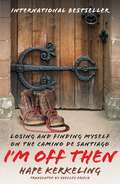
By Hape Kerkeling. 2006
I'm Off Then has sold more than three million copies in Germany and has been translated into eleven languages. The…
number of pilgrims along the Camino has increased by 20 percent since the book was published. Hape Kerkeling's spiritual journey has struck a chord. Overweight, overworked, and disenchanted, Kerkeling was an unlikely candidate to make the arduous pilgrimage across the Pyrenees to the Spanish shrine of St. James, a 1,200-year-old journey undertaken by nearly 100,000 people every year. But he decided to get off the couch and do it anyway. Lonely and searching for meaning along the way, he began the journal that turned into this utterly frank, engaging book. Filled with unforgettable characters, historic landscapes, and Kerkeling's self-deprecating humor, I'm Off Then is an inspiring travelogue, a publishing phenomenon, and a spiritual journey unlike any other.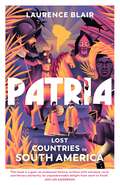
By Laurence Blair. 1933
A spellbinding history of South America, as heard on The Rest Is History'Absolutely wonderful' DOMINIC SANDBROOK** A FINANCIAL TIMES BEST…
BOOK OF 2024 **Patria tells an alternative history of South America, spanning thousands of miles and five centuries to the present. Looking beyond modern borders, Laurence Blair takes as his waymarks nine countries that can’t be found on a map: vanished realms, half-imagined utopias and dismembered homelands.Blair’s journey ranges from ancient Amazonian city-states and a rebel Inca dynasty in the jungle – via a Brazilian Wakanda that defied slavery, Bolivia’s landlocked navy, and the Patagonian power that defeated the Spanish – to fall in with the African freedom fighters who marched over the Andes, and the New World Napoleon who led Paraguay to its ruin.Groundbreaking recent scholarship, striking archaeological discoveries and vivid eyewitness reporting – including encounters with drug lords, Indigenous leaders, refugees and former guerrillas – weave a story of survival, resistance and revolution, restoring South America to the centre of world history.'An unputdownable delight' JON LEE ANDERSON'Constantly surprising and always enticing' HARRIET RIX
By David Seltzer. 2025
In Transit Tourism: The Iconic Art and Design of 22 Subway Systems around the World, readers embark on a visual…
journey through the world's bustling subway systems, where each station tells a story of its city's soul. From the ornate elegance of Moscow's stations to the sleek minimalism of Tokyo's, this illustrated collection of travel essays explores 22 urban metros, revealing how their architecture, art, and design reflect the unique character and culture of each metropolis. Whether urban explorers, design aficionados, or simply curious about the hidden narratives beneath our cities, readers will encounter a fresh perspective on the subterranean worlds that shape our urban landscapes.Key Features:Visual culture showcase: Explore architecture, art installations, and graphic design.Unique book design: Each chapter mimics a subway line, with color-coded sections and Museo typeface inspired by timetable brochures.Entertaining narrative: Travel essays written from a tour guide&’s viewpoint for a passenger's perspective, blending humor and observation.Global scope: Covers major systems in North America, Europe, and Asia, appealing to travelers and urban enthusiasts alike.Subway system ratings: Each chapter concludes with a unique token ranking system, evaluating subway systems on convenience, design quality, and personality, providing readers with an assessment for planning their transit adventures. Uncover the fascinating stories beneath your feet with Transit Tourism: The Iconic Art and Design of 22 Subway Systems around the World, a captivating exploration of how subways shape and define the cities we love.
By Frédérick Lavoie. 2023
Des bidonvilles de Dhaka à l’Ukraine en guerre, Frédérick Lavoie apprend à vivre avec le trouble – et parfois à…
le semer – afin de répondre aux défis de son époque, en particulier à celui de la catastrophe écologique. Nourri par la pensée de Donna Haraway, Anna Tsing et d’autres, Troubler les eaux est un récit qui nous fait éprouver le vertige d’un journalisme renonçant à ses certitudes pour mieux prendre en compte la différence et l’insoluble.